Our Footprint
Elements has been calculating its carbon footprint (CO2e) since 2019. This project was initiated in collaboration with our sustainability coordinator, Nelson, and CO2logic, an independent environmental consultancy. Calculating your emissions is essential for developing an emissions reduction plan.
How it works: Emissions are calculated based on data provided by a company, such as the number of kWh of electricity consumed, liters of gasoline, incoming goods, outgoing packages, and emission factors compiled by specialized institutes such as the UK's DEFRA or the France's ADEME. All greenhouse gas emissions are converted into CO2 equivalents, i.e., CO2e.
Emissions are divided into three categories depending on where they occur in the supply chain.
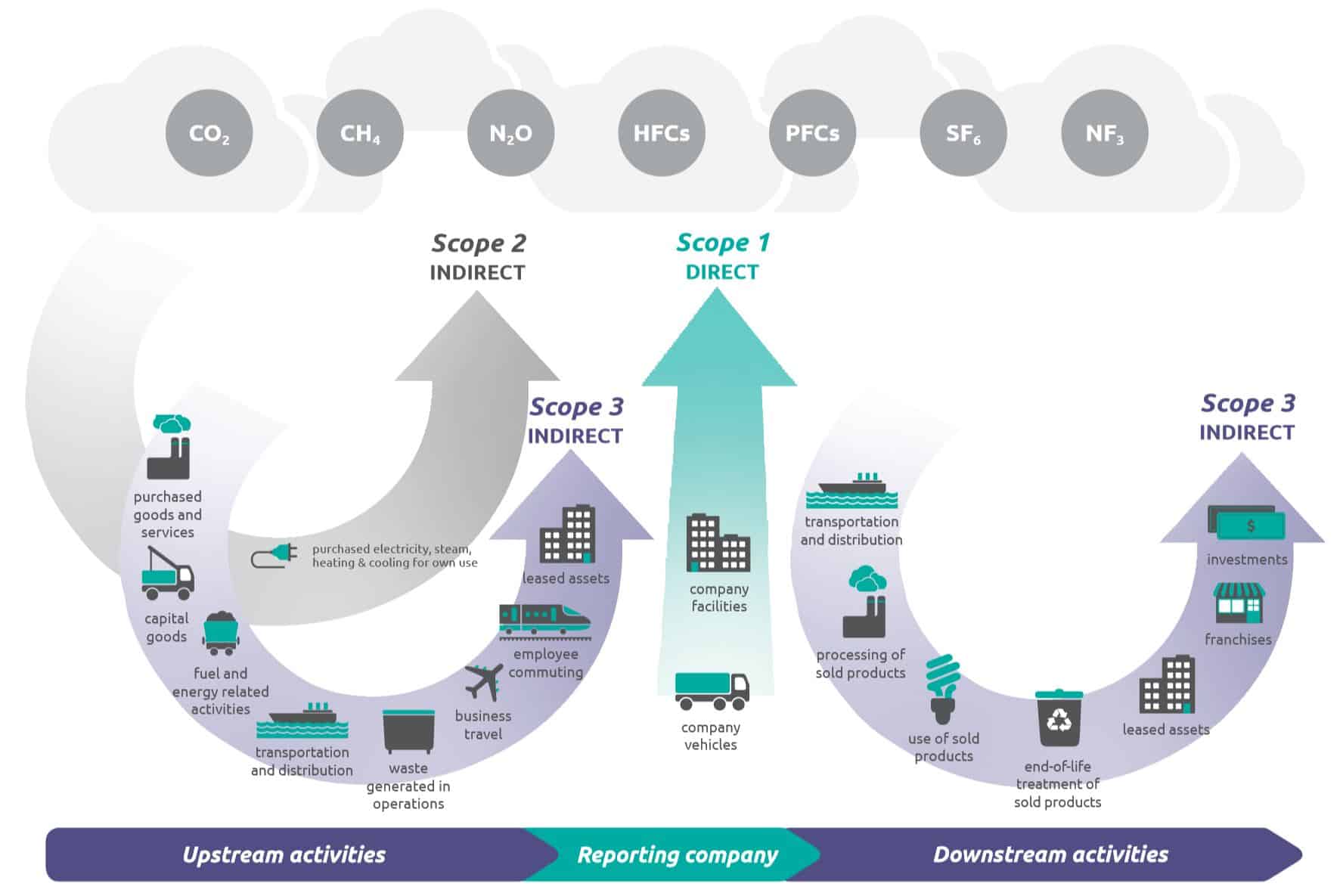
Bron: Greenhouse Gas Protocol
Elements meet the following activities:
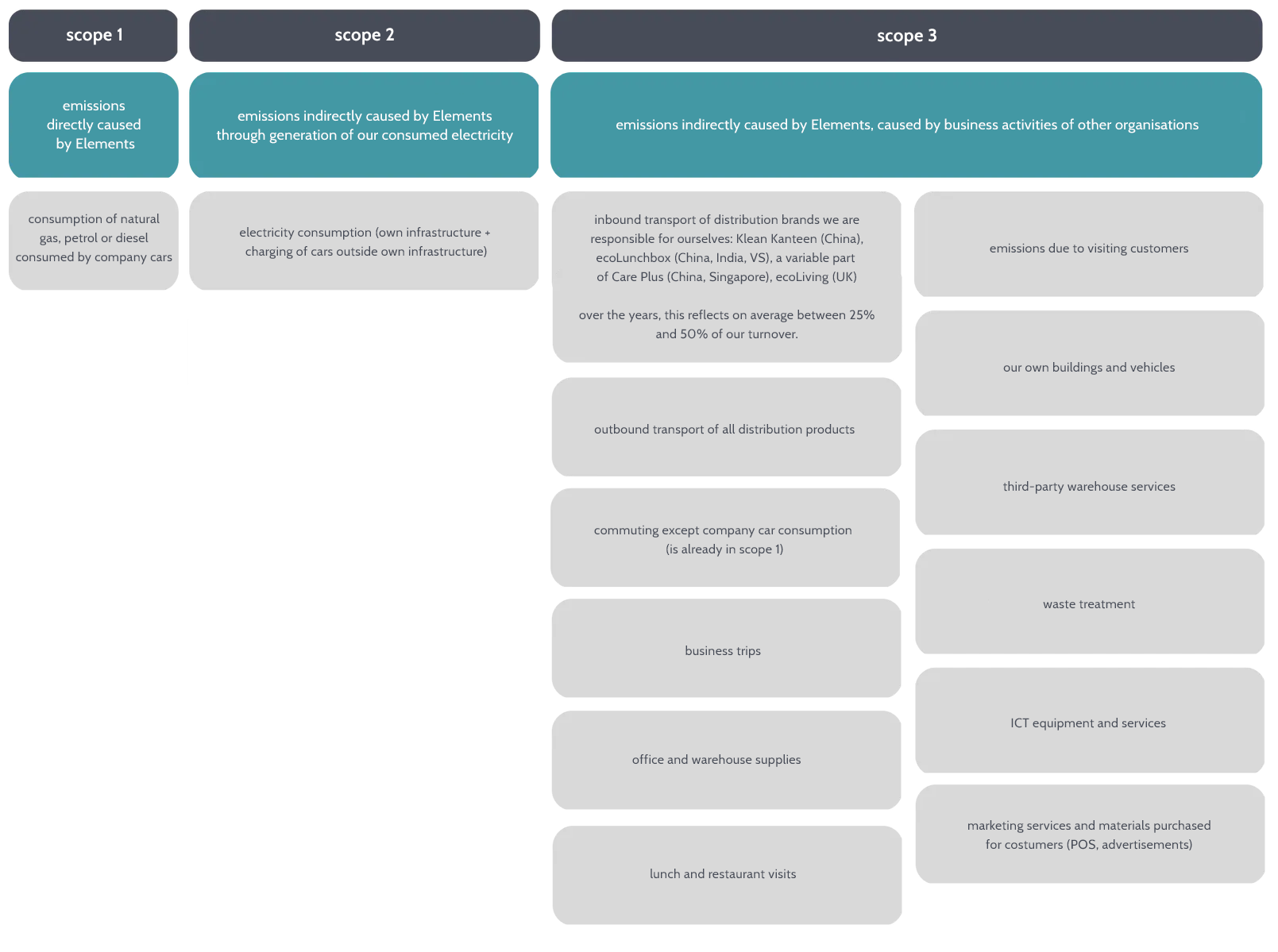
The idea behind this breakdown is that when every organisation in the world reduces its scope 1 2 emissions, global reductions will be achieved.
The reality is that not everyone is doing this at the moment, which is why we also measure and reduce scope 3 emissions.
Our current scope 3 reflects the activities where we have direct access to the data (our own data, directly from the carrier, waste processor).
We currently don't measure incoming transport of our other brands, nor the production and use of any products we sell. We hope to be able to add this in the future in a reliable and time-efficient way.
With our Brand Responsibility screening, which assesses the impact of a potential new brand, we're already trying to move in the right direction in these categories, although this isn't currently quantifiable.

Element is a member of the SME Climate Hub. The SME Climate Hub is a global initiative that aims to integrate climate action into small and medium-sized businesses (SMEs) to enable them to become resilient businesses of the future. We use the SME Climate Hub's free tools to calculate our emissions.
Anyone can become a member of the SME Climate Hub. More information can be found at: SME Climate Hub
Reduction plan
As a member of the SME Climate Hub, we have entered into the SME Climate Commitment.
We recognize that climate change poses a threat to the economy, nature and society in general, therefore we aim to:
- Halve our greenhouse gas emissions by 2030
- Achieve net zero emissions by 2050
- Communicate our progress annually
We are proud to join governments, companies, cities, regions and universities around the world with the same mission.”
For our size of company, this commitment applies to scope 1 and 2, although we are also taking actions to reduce our scope 3 emissions.
Scope 1 2 reduction plan (validated by Science Based Targets initiative):
- Investing in a heat pump (reducing gas consumption)
- Investing in your own solar energy and green citizen energy.
- A mobility plan that focuses on less driving, electrification and cycling.
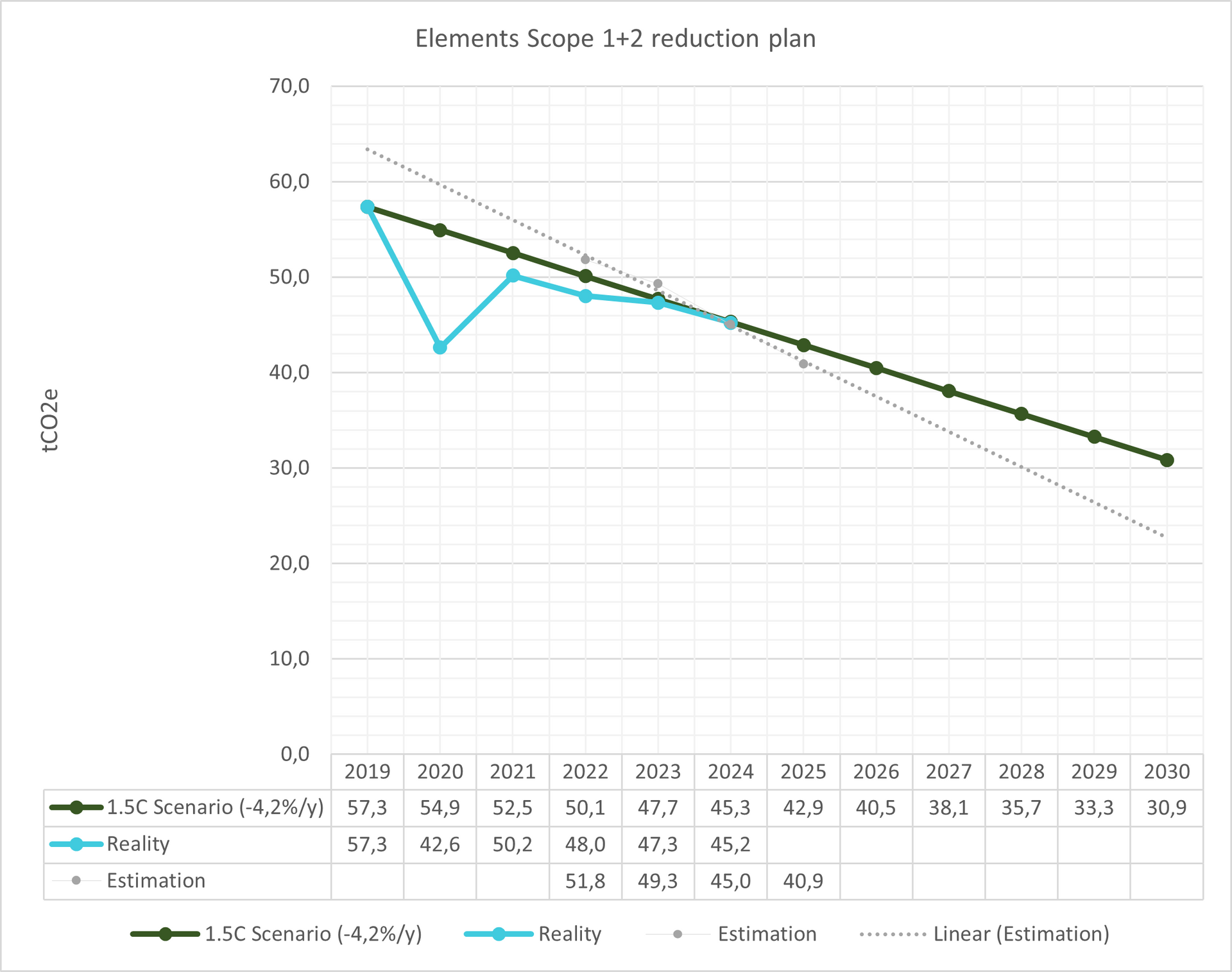
This graph shows our current progress and future projections (6/2024). Due to the staggered start of our investments, we expect an acceleration in the reduction of our emissions from 2025 onwards.
*Read more about how our SBT came about and why it replaces our CO2 neutrality on our blog.
We are reducing our footprint with this plan:

We're happy to support you in finding your own path to responsible business practices. Don't hesitate to contact us with your questions!





